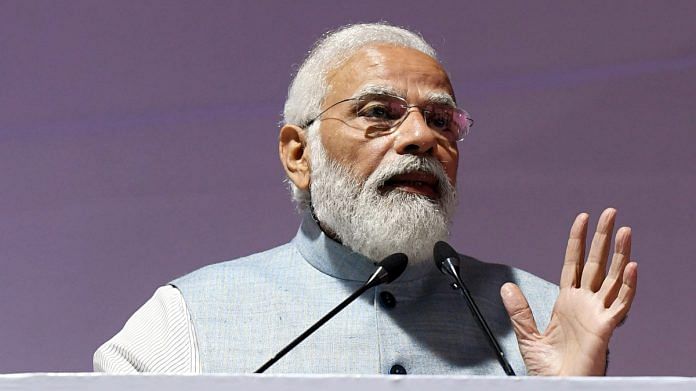Even as the officials of the Ministry of External Affairs were bidding goodbye to British Prime Minister Boris Johnson as he left India, the European Union delegation landed in New Delhi with a long wishlist, looking for trade and strategic partnership agreements. Post-Brexit, the significance of increasing engagement with India has increased for both Britain and the EU.
Although India-EU engagement began as far back as 1963 with the establishment of diplomatic ties with the European Economic Community (EEC), it took almost three decades for the partners to design a mutually beneficial trade arrangement. In the ’90s, India embarked on an economic liberalisation programme to attract investments from developed economies of the West.
Meanwhile, the EU came up with a strategy to deal with Asia as a single trading block. The details were spelt out in the document titled ‘Towards a New Asia Strategy’. But the absence of a single Asian trade block strong enough to conduct tough negotiations with the EEC, coupled with the attractive, rather aggressive trade and business policies of China, ended up in the EU doing more business with Beijing than the rest of Asia.
The 5th India-EU Summit, held in The Hague, the Netherlands, in 2004, upgraded the bilateral relationship to that of ‘strategic partnership’. The 2005 Summit put the stamp of approval on the ‘Joint Action Plan’ (JAP), but very little progress was witnessed despite India putting its best foot forward in taking the strategic outreach with the EU and the US, in particular, through the 2009 India-US nuclear pact. The trade negotiations somehow came to a halt in 2013, only to be revived in 2021.
The EU-India Connectivity Partnership Agreement (CPA) of 2021 finally paved the way for greater cooperation and convergence on strategic and much stronger action-oriented partnerships. Both the parties seem to have realised the need for four important aspects, besides doing trade, to build a lasting partnership that is sustainable, resilient, transparent and inclusive. The unstated but widely understood aspect is the threat posed by China’s rise as a global superpower and trade with the EU members on the one hand and the increasing influence of China in the immediate and extended neighbourhood of India on the other. The growing awareness and acceptance of India’s centrality to the larger and comprehensive agenda of a free, open, and inclusive Indo-Pacific by the EU member countries and the rest of the democratic world is a stimulus to the present negotiations.
Also read: As Boris Johnson races to match EU trade and offers, India is in a win-win position
Increasing dependence on China
Meanwhile, EU-China trade saw a quantum jump. Between 2011 and 2021 — the EU recorded a trade deficit of 249 billion euros in 2021, an increase from 129 billion euros in 2011. Soon, the EU’s dependence on China increased to such an extent that the supply chain disruption due to the Covid pandemic was an eye-opener for the EU members.
The EU’s increasing dependence on countries outside its circle of members, especially China, has not only heightened its fragile trade ecosystem but also its vulnerabilities in the long run. The two years of the Covid-related economic setback have exposed the chinks in the supply chain armour and stressed the need to create newer ones urgently. Many of the EU members, individually and collectively, seem to be looking to insulate their highly stressed economies from external dependence and non-conventional security threats.
Acting on these emerging threat perceptions, the EU has initiated the ‘Global Gateway’ strategy with plans to mobilise up to 300 billion euros in investment by the end of 2027 to create seamless connectivity and avoid ‘dependency’ between Europe and the rest of the world.
Also read: Is France our ‘new Russia’ – What Macron’s re-election means for India
Maintaining balance
Connectivity is central to the success of the India-EU bilateral and multilateral trade relations, which also require a foolproof sectoral implementation roadmap in green fuel, banking and financial instruments, trade barriers, general facilitation and technology transfer and science, and technology & innovation (STI). Since 2014, India has accorded very high priority to multi-modal connectivity — the PM Gati Shakti Master Plan — by making it a part of the economic policies as reflected in the ‘One Nation-One Power Grid, One Gas Grid, One Water Grid, One Mobility Card, One Optical Fibre Network’ approach.
India’s sterling leadership in piloting the International Solar Alliance (ISA) and the Coalition for Disaster Resilient Infrastructure (CDRI) are major steps in sustainable development. While India puts forth its national interests, the EU does not represent the individual national interests of its 27 members. Thus, New Delhi and Brussels will have to keep this ‘national interest’ balance in mind while designing trade and security architecture.
India-EU relations will also have to take a realistic view of the hard ground realities. While many member countries of the EU tend to take a positive view of India’s quest for the United Nations Security Council reforms, the EU, as an institution, is yet to take a decisive stand. Its enthusiastic advice on India’s unrestricted market opening and making the investment path hurdle-free needs to be balanced with Prime Minister Narendra Modi’s flagship programmes such as Atmanirbhar Bharat Abhiyan and Make in India. The earlier attempts to create an open economy without ensuring a level playing field met with stiff opposition from certain lobbies, resulting in an adverse political fallout for the Bharatiya Janata Party.
Both India and the EU will have to increase the speed and the seriousness of their trade and security engagement in the changed geopolitical realities.
Seshadri Chari is the former editor of ‘Organiser’. Views are personal.
(Edited by Humra Laeeq)



